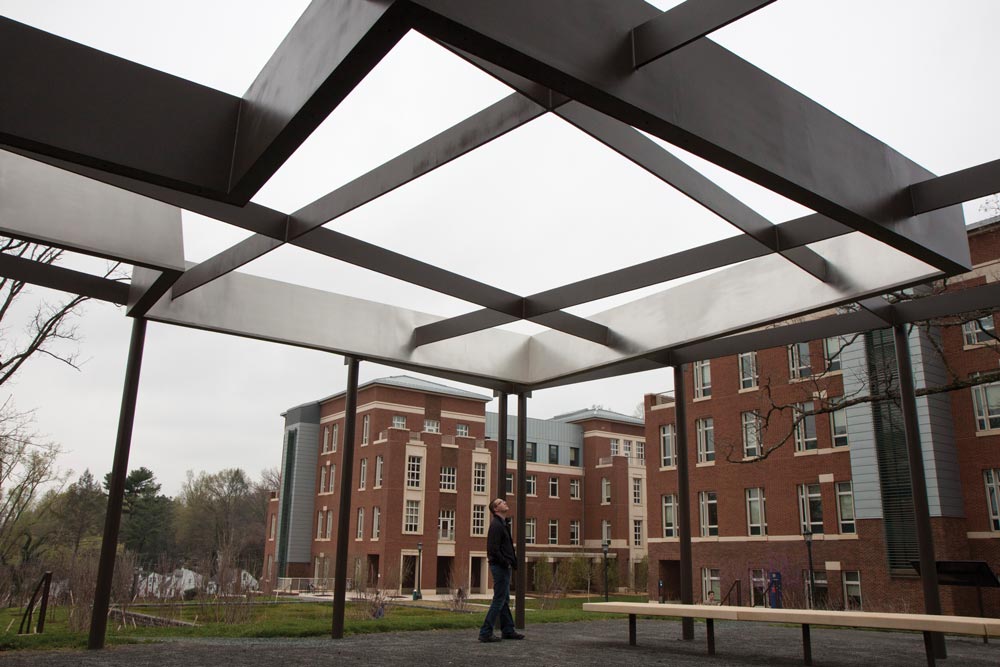Shadows of the Past
South Lawn to include memorial to African-American community

In 1895, the University’s rector approved the construction of Cabell, Rouss and Cocke halls—thus closing off the Lawn, partly to block the view of “the area immediately to the south of the University’s land and in full view … filled with unsightly houses.” At the time, the neighborhood, known as “Canada,” is believed to have been the home to a community of African Americans, many of whom worked for the University and its faculty and students.
More than a century later, as the University expands across Jefferson Park Avenue, it will memorialize one of those houses and 32 community members buried nearby. Part of the highly anticipated South Lawn Project, the one-acre park will include a “shadow catcher” outlining the house’s footprint and a low wall, built of local stone, surrounding the unmarked graves.
Architectural drawings show a solid piece built of polished aluminum the size and outline of the home occupied by Catherine “Kitty” Foster, a free black woman who purchased the property in 1833. That piece will rest atop a larger wooden trellis. The shadows—the solid outline of the house, surrounded by the grid of the trellis—will shift with the movement of the sun.
Twelve grave shafts were discovered at the site in 1993, when a parking lot was built nearby, and were left undisturbed. Follow-up investigations in the mid-1990s located the cellar of what was presumed to be the primary residence, plus thousands of household artifacts. Additional archaeological work in 2005 identified 20 more grave shafts and additional artifacts. The graves and home site will be carefully preserved, say University officials, who leave open the option of future investigations.
